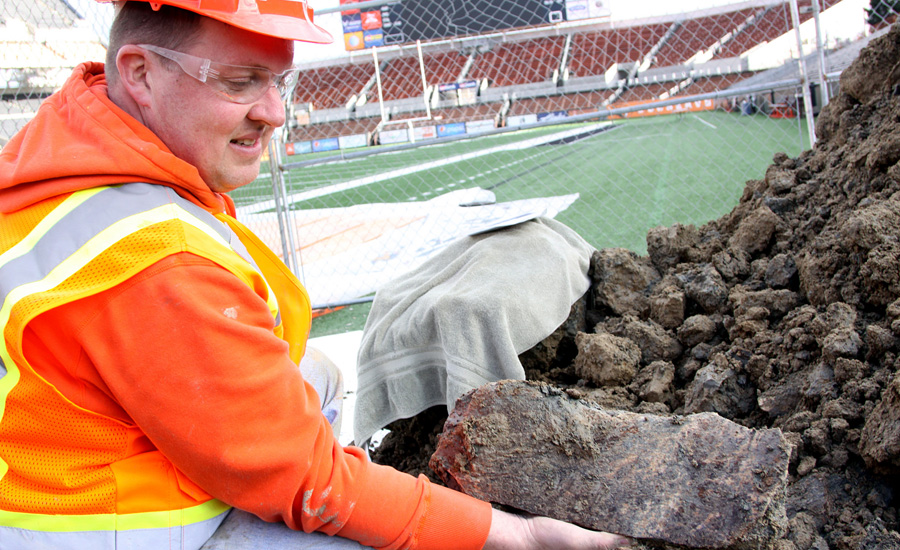Construction workers knew they had dug up bones as part of Oregon State University’s Valley Football Center expansion. But the find in the Reser Stadium north end zone area still had a perplexing situation on hand. What type of bones had they just discovered?
That’s when the history lesson started on the university campus. Workers from Hunt/Fortis, a joint venture of Hunt Construction Group and Fortis Construction, had uncovered mammoth bones.
“There are quite a few bones, and dozens of pieces,” says Loren Davis, an associate professor of anthropology at OSU, in an Oregon State release, who was called to the site after the initial discovery. “Some of the bones are not in very good shape, but some are actually quite well preserved.”
Crews digging up sections of the north end zone started work after the fall football season, part of an expansion expected to be ready for the 2016 season. The worker who found the first large femur bone stopped immediately, says Tim Sissel, project manager for Hunt/Fortis. After notifying OSU officials, Davis came to the site while crews moved to other areas of the project.
Since there were no signs of human bones or artifacts, the site is not considered archaeological and Sissel says delays were minimal.
Still, though, the mammoth find was interesting, at very least. The discovery of the ancient mammal bones is not unusual in the Willamette Valley, Davis said. The bones, including mammoth, bison and some kind of camel or horse, were discovered in a 10-foot deep plot in an area that could once have been a bog or marsh, Davis said. The animals do not appear to have been killed.
“Animals who were sick would often go to a body of water and die there, so it’s not unusual to find a group of bones like this,” Davis said. “We had all of these types of animals in the Willamette Valley back then.”
The school reports that in the short term, Davis plans to soak the discovered bones in water to prevent further deterioration, and hopes to send some out for carbon dating to determine more about their age. He and his students will also continue excavating a large pile of dirt pulled from the site, where more bones are likely buried.
“It’ll be a great learning experience for them, to learn how to identify extinct animal bones,” Davis said. “It’s really an amazing find.”
A touchdown, you might say, for Hunt/Fortis.
Follow Tim Newcomb on Twitter at @tdnewcomb.


Post a comment to this article
Report Abusive Comment